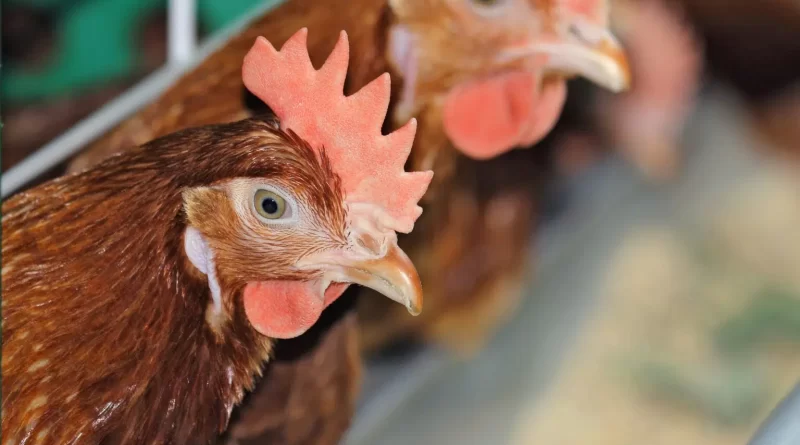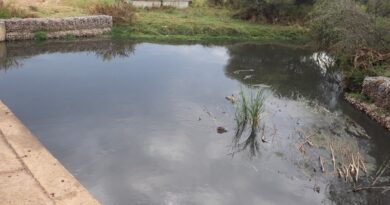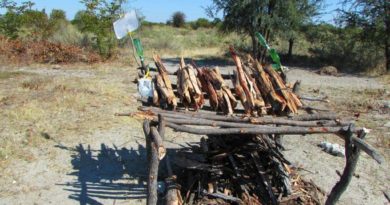Small-scale farmer’s guide to layer production
The successful production of table eggs requires the implementation of some basic farming principles. These include selecting the correct genetics or breed of animal, following a recommended nutritional programme, good farm management practices, and providing and maintaining a suitable environment for the hens to be productive. All of these components go hand in hand, and each one is as important as the other. This article will provide a summary guide to simplify each of these categories for small-scale farmers on layer production.
Where to start and what does this entail?
1. Types of housing systems
There are many different housing systems for layers; the most popular types are battery cages and floor systems. Each has its advantages and disadvantages. Battery cages allow for ease of management, lower incidence of diseases spreading and the absence of litter issues and cost of shavings, while some disadvantages are that cages restrict physical space for hens’ movement, which can lead to higher chances of developing metabolic diseases and higher foot-related injuries.
The opposite is found in floor systems with nest boxes. Layers on these floor-type systems have more space and it allows the bird to move around and is therefore regarded as more humane; however, hygiene is often a problem, as is the cost of litter. Some combination systems contain open cages on the floor with a slat design. Plastic or wooden slats are raised off the floor to allow for the accumulation of droppings. This is often more hygienic and cooler for the birds; however, these systems are only suitable for adult birds. The house design should be carefully considered together with the environmental conditions.
2. Purchase point-of-lay (POL) hens from a reputable source
Most of the commercially available breeds in South Africa have been developed from the White Leghorn and New Hampshire crosses, with Amberlink, Hy-Line, and Lohmann being the most commonly available genetic strains. Carefully select a breed based on production goals. The bird’s purchased need to be able to maintain a high level of production from point-of-lay until approximately 80 weeks of age. She must therefore have a well-developed frame to carry her through the next 60 weeks of production. Only purchase point-of-lay hens from a reputable source where the pullets have been raised correctly, following a good quality nutrition program, vaccination program and on-farm processing
3. Nutrition
Layer hens require fresh feed and water to be available at all times. The feed cost of any farm is approximately 70% of total running costs; it is therefore imperative that the hen is provided with exactly what she needs for both production and maintenance. Anything more is wasting money and anything less will impact hen production. Point-of-lay hens require a balanced ration to meet their egg production and maintenance needs. The maintenance needs of a 20-week-old layer are still high, because the hen is still growing.
4. Water
It is important to remember that water will always be the most important nutrient on any farm. A 50 g egg contains 33 g of water; therefore, a water shortage will result in a dramatic decrease in egg production. Birds should always have free (ad libitum) access to fresh, good-quality water. As a rule and under normal weather conditions, layers should drink twice the amount of water than the weight of feed they consume, which is approximately 220 ml of water per day.
Water quality can be tested at most laboratories for parameters such as total coliform count, Escherichia coli count, pH, total dissolved solids (TDS), and minerals (Ca, Na, Cl, K, and Mg). Birds drinking too much or too little water can be an early indication of disease, which is why monitoring water intake is very important and it must be done at the same time every day.
Bird excreta can also be used as an indicator of water intake. Droppings that appear dry with little urine can indicate low water intake. It is important to bear in mind that as the outside temperature increases, the birds start to pant to get rid of excess heat and water availability and quality become even more vital.
5. Lighting
Layer birds are very sensitive to changes in day length. The supply of light is a powerful tool to manage a consistent level of production. Layers require 14‒16 hours of light a day to maintain egg production throughout the year, Ensure that there is even lighting throughout the house, with no dark areas, A warm light should be used to ensure birds get red spectrum light, which is required to stimulate egg production.
6. Air quality
A comfortable temperature for layers is between 18 °C and 25 °C , with a maximum relative humidity of 80%. Birds will start to pant at temperatures above 25 °C and this will negatively affect egg production. Ventilation is another important aspect of air quality. Good ventilation is required for birds to remove excess moisture and heat from the house, provide adequate oxygen levels to birds, remove carbon dioxide produced by birds, and remove dust and ammonia from the house.
7. Vaccinations
Birds received on the farm at the point-of-lay should already have received most of their vaccinations during the rearing period as pullets. Certain diseases are widespread or difficult to eradicate and will therefore require routine vaccinations. Most flocks are vaccinated against Marek’s disease, infectious bronchitis (IB), Newcastle’s disease (NDV), nfectious bursal disease (Gumboro), avian encephalomyelitis (AE), and fowl pox, Unfortunately, a single programme cannot be recommended for all areas, It is, therefore, best to work with a local veterinarian to design and implement a vaccination programme.
8. Disease control
Layer birds, if vaccinated and kept disease free, can perform well and produce eggs for a long period. To remain disease-free, proper biosecurity protocols need to be put in place on farms. The easiest to control is the movement of people, equipment, and the birds themselves. Biosecurity is the best method of preventing disease. Some simple processes to implement on the farm include the:
- controlled movement of people and equipment, limiting the contact of outside people onto the farm, as well as movement between houses on the farm;
- limited contact with free-ranging birds and wild poultry;
- people visiting the farm must have not been in contact with any other poultry for at least 24‒48 hours;
- use of clean boots and overalls, which must be used when re-entering the farm;
- use of footbaths with disinfectants at the entrance to the farm and all poultry houses; and
- farm should be free of rodents (rodents carry a risk of disease).
At the end of a production cycle, keep two weeks open between previous and new flocks. Thoroughly clean and disinfect houses, including drinkers, feeders, nest boxes ,and all other equipment using a disinfectant. In the event of mortalities, quickly and properly dispose of dead chickens to halt the spread of disease. In this case, it is recommended to contact a veterinarian,
Coccidiosis is a parasitic infection of the intestines that causes irreversible gut damage and reduces feed conversion efficiency. Coccidiostats can be used in the feed to prevent coccidiosis, but they can also be administered via water or a live vaccine.
9. Molting
Molting is a natural process that birds go through when they lose their feathers. It normally occurs towards the end of the laying period and causes a decrease in egg production. Molting can also occur sooner in hot and humid weather,.This process allows the reproductive physiology of the bird to rest and build up a reserve of nutrients.
10. Data and record-keeping
To improve performance on the farm, record-keeping and data management are important tools to establish production goals and monitor animal performance. Remember to always look at the birds’ behaviour, their activity will demonstrate what they need.
Examples of records to keep include:
- Feed intake
- Water intake
- Mortality
- Vaccination
- Bird weight
- Egg production
NB: The above serves as a basic guide to managing and successfully farming with layers to achieve profitability.
(Meadow Feeds)



